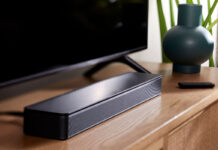 You’re here wondering if you should get a receiver. Receivers may be the home theatre/stereo component most fraught with uncertainty and intimidation. After all there’s a lot of choice and the units themselves may seem frighteningly complex. So do you need a receiver, and if you do, how can you choose one? We’ll take you through the decision making process and help you decide.
You’re here wondering if you should get a receiver. Receivers may be the home theatre/stereo component most fraught with uncertainty and intimidation. After all there’s a lot of choice and the units themselves may seem frighteningly complex. So do you need a receiver, and if you do, how can you choose one? We’ll take you through the decision making process and help you decide.
What is a receiver?
A receiver is the core of any home theatre system. Receivers act as the central hub where all your components will be connected, and it gets everything to work together; a receiver is what lets your speakers put out the sound from your TV, for example, or how your record player, streaming device, TV and smart phone can all work together. They add connectivity and configuration by managing things like surround sound capability, plus new digital audio and video processing.
What’s the difference between a receiver and an amplifier?
What’s the difference between a receiver and an amplifier? An amplifier is, as the name suggests, a way to amplify your audio, while a receiver is a do-it-all component that lets you connect and control multiple devices. Many receivers are also amplifiers, while amplifiers are not receivers.
Aging receivers & New technology
If you have an existing receiver but have been looking to upgrade, there’s been a tonne of change in this core component in the last few years. Many receivers have Wi-Fi and/or Bluetooth connectivity, meaning you can stream music from your phone, tablet or computer, where before, you needed to connect smart devices with an AUX jack, something that’s now nearing impossible since most smartphones are doing away with a physical connection..
Many new receivers have internet radio, Spotify, satellite radio, and music services like Amazon Music, Google Play and Apple iTunes built in, making them infinitely connectable.
Some also come with digital assistant technology like Amazon Alexa and Google Assistant, so you can ask your stereo to make changes, adjust volume or play music and it can comply.
Can I make my old ‘dumb’ receiver smart?
If you’re in love with your old receiver but do want to add some wireless functionality, you can consider adding a component like Google Chromecast Audio, a smart digital dongle that will allow you to stream to older stereo components. Read more about that here.
Which components can I connect to a receiver?
A good receiver will connect to nearly any home theatre component you’d want; digital record player, TV, sound bar, gaming console, streaming TV stick, cable box, speakers and more.
Pretty early in the decision making process, it’s a good idea to make yourself a list of the components you’ll want to connect; both in the immediate future and more long term.
If you have growth aspirations for your home theatre, it’s a good idea to plan for that now if you can.
 A word about sound bars and some home theatre audio
A word about sound bars and some home theatre audio
If you’re looking to add a sound bar and perhaps a few speakers to your home theatre to take the sound from your flat screen’s built-ins to the next level, you may not need a receiver.
Some systems like Sony’s HTZ9F (read the full review and how to here ) have the receiver built in to the sound bar itself and are made to be able to connect a few additional components so you can wire up a simple home theatre for watching TV, listening to music and more, all without the need for an extra component like a receiver.
Choosing a receiver: questions to consider
Are you a novice or an audiophile?
Before you get to far down the receiver shopping road, ask yourself what kind of customer you are; are you an expert? Intermediate home theatre buff? Complete newbie? Newbie, but with big aspirations? Knowing who you are in this game will help you decide what type of system and set up is right for you.
If you’re just looking for something to bring a little more improved audio to your flatscreen, you may not need a receiver. If you’re looking to build a killer home stereo with all the bells and whistles, you’ll want a receiver that can handle a growing list of components.
Stereo, Surround or Atmos?
 One of the early choices you’ll need to make is whether you’re going to do a basic stereo set up, which is usually just two speakers (left and right), a surround sound set up (front and rear speakers) or a Dolby Atmos set up which adds in overhead channels to create a 3D soundscape (also known as object-based sound) and requires a more involved set up and special Atmos components.
One of the early choices you’ll need to make is whether you’re going to do a basic stereo set up, which is usually just two speakers (left and right), a surround sound set up (front and rear speakers) or a Dolby Atmos set up which adds in overhead channels to create a 3D soundscape (also known as object-based sound) and requires a more involved set up and special Atmos components.
Stereo receivers are really only made to handle a basic stereo set up, while more advanced receiver, known as Home Theatre Receivers, have the smarts to deal with audio and video processing and signals, making them more versatile.
Dolby Atmos components make up an amazing home theatre system, and despite how it may seem, it’s not as intimidating as you might think. If you’re leaning towards Dolby Atmos, you’ll need to make sure the receiver you choose is Dolby Atmos enabled.
Shop Dolby Atmos Receivers and sound bars here.
What’s with DTS:X?
You may also be seeing the term DTS:X floating around as you’re doing your receiver research, wondering what it means?
Like Dolby Atmos, DTS:X is an object based 3D sound system designed to compete against Dolby. Many receivers support this format. Like Atmos, you will need overhead speakers to get the most from this format.
2.0, 5.1.2; What’s with all the numbers?
 You’ll see home theatre set ups expressed in numbers: 2.0, 5.1.2, 7.1.2 etc. Those numbers denote how many speakers and sub woofers the set up can handle. To read more about what those numbers mean read Jeff’s excellent article, Home Theatre explained: what do all those numbers mean?
You’ll see home theatre set ups expressed in numbers: 2.0, 5.1.2, 7.1.2 etc. Those numbers denote how many speakers and sub woofers the set up can handle. To read more about what those numbers mean read Jeff’s excellent article, Home Theatre explained: what do all those numbers mean?
Common receiver features
- Most receivers today come with the following ports and connections:
- phono jack
- USB (usually multiple USB; some in the front and some in the back) for things like streaming devices and sound bars
- speaker ports for wired speakers
- audio and video cable connections
- antenna connection
- cable box connection
- headphone jack
- LAN cable???
- AUX jack
- Subwoofer connection

For the most part, these connections are universal and found on every receiver out there, so it’s highly unlikely you’ll have a component you can’t connect. Even so, if you do have things you want to be sure will plug into or stream to your new receiver it’s a good idea to ask about it or look it up early on and make sure the receiver you choose can accept it.
Receivers: The power question
Some audio nerds will tell you the key to a great home theatre is all about the power; how many wats can your receiver and speakers handle? What’s the peak power? For the most part, unless you’re buying a bargain basement receiver, you’ll likely get plenty of power from nearly any mid or high end brand you’ll put on your shortlist. Many receivers’ specs come in around 100 watts per channel anyhow. If you think you need more, you’re probably too advanced for this article, and you should message me so I can get you to write up Part 2 of this. article, “home theatre for experts.”
Auto calibration and room sensing
Some new receivers on the market today can ‘tune’ your set up for optimal sound quality. If you’re a novice, this is probably not of interest to you, but if you’re more in the intermediate camp, it might help you fine tune your set up.
These receivers ‘listen’ to the room you’re in by (more or less) putting out sound and measuring the echos that come back to an included microphone to calibrate your set up. While this is a nice feature, it’s probably overrated.
4K video processing
If you own or plan to get a 4K TV, you definitely want a receiver that’s 4K ready. Even if you don’t think you’ll get a 4K TV, you might as well get a 4K-ready receiver; it’s future-ready and many, many receivers on the market today are already 4K enabled. Plus if you current TV suddenly dies, chances are very high your new TV will be 4K, and it would be a shame if you had to get a new TV AND a new receiver too.
What is Pass-Through?
The term ‘pass-through’ refers to a receiver’s ability to pass certain signals through the receiver. In some cases this may be an HD video signal, or it could be a 4K signal. Pass Through just means the video signal is allowed to pass through the receiver or sound bar on its way from the TV to the speakers, for example.
Voice Control in receivers
Increasingly, more and more receivers are coming with voice control capabilities installed. Digital assistants like Amazon Alexa and Google Assistant are built in so you can ask your receiver to help you by raising the volume, skipping tracks, changing inputs and more.
Major receiver manufacturers
 Names like Onkyo, Sony, Pioneer, Marantz, Denon, Harman Kardon and more. Best Buy carries many reputable brands, and the best way to help choose the right one for you is to create a shortlist, and read reviews and owner comments. The Best Buy Plug In blog can help you, or search the BestBuy.ca site.
Names like Onkyo, Sony, Pioneer, Marantz, Denon, Harman Kardon and more. Best Buy carries many reputable brands, and the best way to help choose the right one for you is to create a shortlist, and read reviews and owner comments. The Best Buy Plug In blog can help you, or search the BestBuy.ca site.
Specialized audio formats & specs
If you’re doing home theatre research, you may come across terms like High-res Audio, Lossless Audio, Impedance, Ohms, DAC and more. There’s much more to learn about home theatre if you’re keen.
If you’re just getting into home theatre, you probably don’t need to worry about these terms and what they mean for the finer points of your set up and components.
Focus on building a solid base system that can grow as you learn more and upgrade or purchase components. And that all starts with a good quality receiver.



